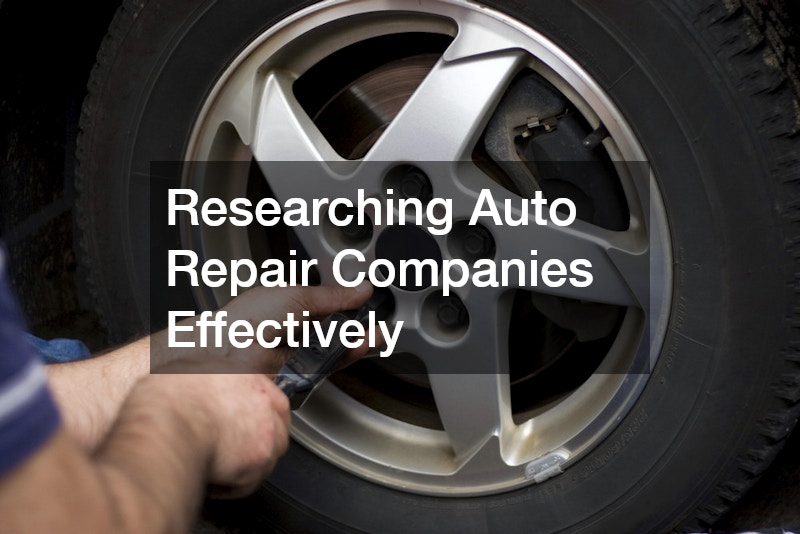Budgeting for vehicle maintenance and repairs is essential for every car owner who wants to avoid the stress of unexpected expenses. Whether you drive a fuel-efficient sedan or a heavy-duty truck, allocating funds ahead of time can help you handle routine servicing and unforeseen breakdowns without draining your savings. A thoughtful repair budget also provides peace of mind when you need to compare estimates from various shops or service providers. By understanding typical costs, researching trustworthy providers, and setting aside a dedicated fund, you’ll be better equipped to maintain your vehicle’s performance and value over the long term.
Understanding Common Auto Repair Costs

Every vehicle will require different levels of upkeep depending on its make, model, age and mileage. Routine inspections and parts replacements—like brake pads, oil changes, and filters—often fall within predictable price ranges. However, more extensive work such as transmission overhauls or engine rebuilds can strain your budget if you’re unprepared. It’s wise to familiarize yourself with average costs in your area to set reasonable expectations. Tracking historical maintenance invoices for your vehicle also offers valuable insight into upcoming expenses.
Setting a Realistic Repair Budget
Start by reviewing your monthly income and fixed expenses to determine how much you can comfortably allocate to car care. Experts generally recommend reserving at least 1–3% of your vehicle’s purchase price annually for maintenance and repairs. For instance, if your car was $30,000, setting aside $300–$900 each year provides a solid baseline. Adjust this percentage upward for older vehicles or higher-mileage cars, which often need more frequent attention. By automating transfers into a dedicated savings account, you ensure the money is there when a repair bill arrives.
Researching Auto Repair Companies Effectively

Finding a reputable shop starts with online reviews, personal recommendations and professional certifications. Look for facilities endorsed by the National Institute for Automotive Service Excellence (ASE) or affiliated with manufacturer programs. Comparing quotes from at least three different providers gives you leverage when negotiating prices and assessing service quality. Always ask for detailed breakdowns of labor, parts and fees to spot hidden costs. Reliable auto repair companies will provide transparent estimates and explain the necessity of each service item.
Planning for Maintenance and Diesel Service Expenses
Diesel-powered vehicles require specialized maintenance routines that differ from gasoline engines. Regular diesel service includes fuel system cleaning, injector inspections and more frequent oil changes with high-detergent formulations. Filter replacements for diesel engines can also cost significantly more, so factor these costs into your annual budget. If you drive a diesel truck or van, review your owner’s manual for manufacturer-recommended intervals and obtain quotes from shops experienced with diesel powertrains. Proactively scheduling maintenance prevents costly breakdowns and preserves performance.
Anticipating Costs from Auto Accidents

Even the most cautious drivers can’t eliminate the risk of collisions. Minor fender-benders might require nothing more than paint touch-ups, but more severe impacts often lead to frame damage or airbag deployment. Repair costs following auto accidents can escalate quickly if structural components or safety systems are involved. Before budgeting, check your insurance coverage to see what deductibles you’ll owe out of pocket. Knowing these figures helps you plan for the financial impact of repairs that fall outside insurance payouts.
Navigating Auto Collision Repairs Without Breaking the Bank
Auto collision repairs involve bodywork, paint, part replacements and sometimes frame alignment. Prices vary based on parts quality—OEM versus aftermarket—so decide early which option aligns with your needs and budget. Many collision shops offer payment plans or referrals to financing partners to spread out expenses over time. Request a written estimate that lists each part, labor charge and supplementary fee. Comparing multiple auto collision repairs quotes ensures you get a fair rate without sacrificing workmanship.
Estimating Expenses for Auto Tinting Projects
Adding or replacing window tint offers benefits like UV protection and interior temperature control, but it’s also a discretionary expense. Costs depend on the film quality, vehicle size and number of windows. High-end ceramic or metalized films cost more than basic dyed films but last longer and resist fading. When budgeting for auto tinting, factor in installation fees and state compliance regulations, which might require specific tint percentages. Balance desired features against cost to determine the right investment for your driving environment.
Budgeting for Essential Local Windshield Replacement
A cracked or chipped windshield poses safety hazards and often fails state inspections. Local windshield replacement services can be surprisingly affordable when shops use aftermarket glass. However, OEM windshields command premium prices due to stricter quality standards. When obtaining quotes, verify whether the glass meets federal safety specifications and includes calibration for ADAS (advanced driver-assistance systems) cameras if applicable. Allocating a portion of your repair fund for windshield replacement ensures you can act quickly to maintain visibility and safety.
Working with a Local Diesel Mechanic Cost-Effectively
For diesel enthusiasts, finding a reliable local diesel mechanic can significantly reduce labor costs and downtime. Independent shops often charge lower hourly rates than dealerships while delivering specialized expertise. Before committing, verify credentials, ask for references and tour the facility to assess equipment quality. Negotiate package deals for routine diesel service if you require frequent maintenance. By cultivating a relationship with a trusted technician, you’ll benefit from personalized advice and potentially discounted labor rates over time.
Protecting Your Investment with Ceramic Coating
Applying a ceramic coating safeguards paintwork from scratches, UV damage and chemical stains. Although upfront costs may exceed traditional waxing by several hundred dollars, the long-term benefits justify the price for many enthusiasts. Ceramic coating can last multiple years, reducing the need for frequent polishing and paint correction. When budgeting, obtain quotes that specify prep work, number of coating layers and warranty coverage. Distribute the expense across your annual maintenance budget to avoid a sudden large outlay.
Allocating Funds for AC Maintenance and Repairs
Staying comfortable during summer drives requires efficient cooling systems, making air conditioner services a vital part of your plan. Routine checks include refrigerant level inspections, leak detection and compressor performance tests. If issues arise, local ac repair shops may need to recharge the system or replace components such as condensers and evaporators. Parts like refrigerant and hoses can carry premium prices, so compare service packages to find the best value. Scheduling preventative AC service helps catch small faults before they necessitate costly overhauls.
Smart Tips for Saving on Unexpected Repairs

Unexpected breakdowns can derail even the best budgets, but a few proactive measures can reduce the financial impact:
-
- Perform Regular Inspections: Check fluid levels, belts and hoses to catch wear early.
-
- Use Quality Aftermarket Parts: Opting for reputable aftermarket brands can cut parts costs.
-
- Bundle Services: Schedule multiple maintenance tasks during one visit to save on labor fees.
-
- Leverage Membership Discounts: Auto clubs and credit cards often offer repair discounts or cashback.
Implementing these strategies helps keep your repair costs manageable without compromising safety or reliability.
Building an Emergency Auto Repair Fund
An emergency fund acts as a financial cushion when major repairs or accident-related costs arise. Aim to accumulate at least three months’ worth of vehicle maintenance expenses in a separate account. For instance, if your average monthly repair budget is $100, target a minimum of $300–$500 as a starter fund. Automate small transfers after each paycheck to steadily build your balance. Having these reserves ready prevents the need for high-interest credit or personal loans when repairs come unexpectedly.
Financing Major Repairs Through Payment Plans
Beyond building an emergency fund, exploring financing options for major repairs can help you tackle expensive jobs—like engine rebuilds or structural frame work—without depleting your savings. Many auto repair companies partner with third-party lenders to offer low-interest payment plans directly at the point of sale. These arrangements often allow you to break up a large bill—such as one for extensive auto collision repairs—into manageable installments over 6 to 12 months. When considering financing for a costly diesel pump overhaul or other diesel service needs, compare the annual percentage rates, origination fees and repayment terms across multiple lending offers. Be sure to read the fine print: some plans charge deferred interest if you don’t pay in full within a promotional window, potentially turning a zero-interest deal into a high-rate loan.
In addition to shop-sponsored credit programs, unsecured personal lines of credit or low-rate credit cards can serve as backup funding sources for unexpected repair work. Before applying, calculate how much you’ll owe after interest charges and ensure monthly payments fit within your budget projections. If your vehicle is still under manufacturer warranty or covered by an extended protection plan, notify your insurer before authorizing repairs; in some cases, warranty providers will advance funds directly to the auto repair companies, reducing or eliminating out-of-pocket expenses. Negotiating a payment schedule with your chosen shop can also provide relief—many shops will split labor and parts charges into separate invoices so you can prioritize payment for the most urgent services first.
Tracking Maintenance Costs and Records
To refine your budgeting strategy, maintain a detailed ledger of every service visit, repair invoice and parts purchase. After an auto accident or minor collision, for instance, record the date, nature of the damage and invoice total for any local windshield replacement or paint repair. Doing so helps you spot spending patterns—such as recurring glass damage when you use a particular parking lot—and adjust preventive measures or insurance coverage accordingly. If you’ve invested in auto tinting, keep receipts that specify film type and installation date; fade or peel warranties typically run 3–7 years, and having proof of purchase expedites warranty claims or touch-up services.
Digital tools—like spreadsheet templates, note-taking apps or dedicated vehicle-maintenance trackers—make it easy to categorize expenses by labor, parts and ancillary fees (registration, disposal charges, etc.). Tag each entry with mileage to correlate usage with service needs, giving you an evidence-based forecast of upcoming tasks. Sharing this record with your mechanic or service advisor often leads to more accurate cost estimates and can even qualify you for loyalty discounts if you’ve been a repeat customer at a shop specializing in local windshield replacement or glass repair. Over time, your data will empower smarter decisions, whether you’re deciding between OEM or aftermarket parts or evaluating the trade-off between one-time repairs and full system replacements.
Leveraging Technology for Budget Management
Modern budgeting and vehicle-maintenance apps can automate reminders for routine checks—like air conditioner services or oil changes—and track spending against your annual repair allowance. By syncing your transaction history, you can see in real time how much of your budget has been consumed by local ac repair visits or brake pad replacements. Some platforms even integrate with locator services to compare current service rates from multiple local diesel mechanic shops or body shops offering ceramic coating packages, so you can secure the best deal before booking an appointment.
Beyond cost tracking, digital wallets and virtual envelopes let you earmark funds for each category—fuel, routine maintenance, emergency repairs—so you never overdraft your auto care account. When paired with calendar alerts, you’ll get push notifications months before your next scheduled diesel fluid flush or before your ceramic-coating warranty expires. This proactive approach minimizes last-minute scrambles for funds and reduces reliance on high-interest credit. By leveraging technology alongside your established emergency fund and financing options, you’ll stay in control of vehicle expenses and avoid budget-busting surprises down the road.
Creating a robust budget for auto repair services empowers you to maintain your vehicle’s health while safeguarding your finances. By understanding average repair costs, researching reputable providers and allocating funds for routine maintenance—from diesel service to ceramic coatings—you’ll face fewer surprises on the road. Prioritizing essential expenses like auto collision repairs and local windshield replacement ensures safety remains paramount. Finalizing your plan with an emergency repair fund and smart savings tips further solidifies your readiness. With a comprehensive budget in place, you’ll enjoy greater confidence behind the wheel and extend the lifespan of your automotive investment.
